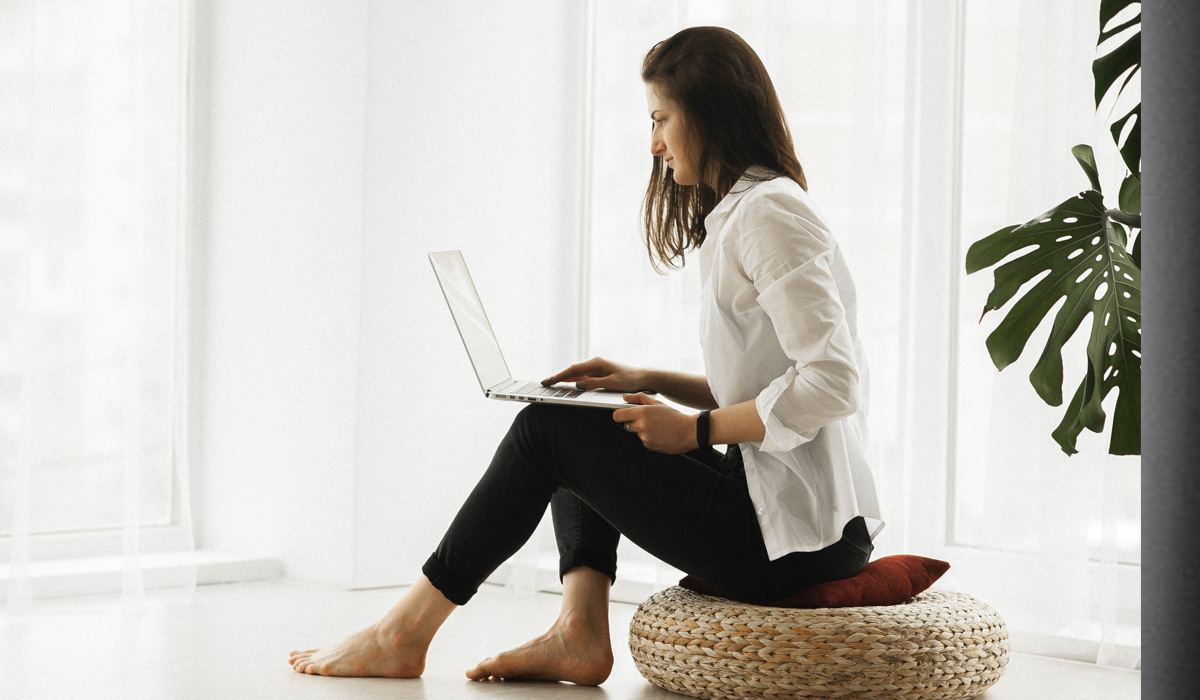Rather than our usual ergonomic office set-up, working from home during self-isolation means many of us are spending our days slouched in bed with our laptops or working from the kitchen table, and are moving less than ever throughout the day.
These prolonged hours of these often slouched, and static postures can result in significant discomfort.
Setting up a work space at home that considers your posture and incorporates some simple exercises throughout the day is extremely simple, and will have positive effects on your health, movement and productivity.
Keep your monitor at eye height
The most important aspect of your desk set-up is getting the screen at eye height. Often in the office, people use monitors or stands for their laptops. Though, at home you can use some stacked books to raise the laptop to eye height, then connect a keyboard and use a mouse. This set-up will assist in maintaining your upper back, head and neck in a neutral position, minimising muscle fatigue.
Think about your desk set-up
Though it might be comfortable initially, always avoid slouching on the sofa or lying in bed to do your work. You should always use a solid desk or kitchen table to work from. The height of your chair should be adjusted so your feet sit flat on the floor and your thighs parallel to the floor – you can always use a small step to raise your feet. Your elbows should be able to rest comfortably at a 90-degree angle on the table. If you don’t have lumber support, place a pillow behind your back to support your natural lumbar curvature.

Alternate between sitting and standing
If you can, it’s always best to alternate between working from a sitting and standing position. For those that do not have a standing desk, use your kitchen bench, and again, stack some books to ensure that the laptop is at eye height. Working from a standing position will reduce hip flexor tightness and lumbar spine compression associated with sitting for extended periods of time.
Keep moving
Our bodies are made to move, so our number one tip – keep moving and take regular breaks every 30-60 minutes. Working in any position for an extended period of time will cause muscle fatigue and discomfort, so go for a walk, get some fresh air and reset. We also recommend incorporating some stretches at your desk to decrease joint stiffness, muscle tightness and improve postural awareness.
Try some simple chin tucks, shoulder rolling and seated rotations that can all be done from your desk.




